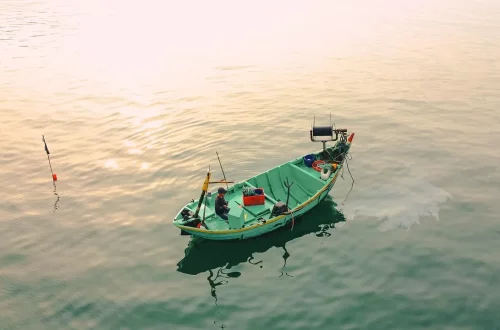
The Ultimate Guide to Choosing and Using a Pulling Rope
Choosing the right pulling rope is essential for various applications, from outdoor activities like camping and hiking to industrial uses and emergency situations. The significance of a reliable pulling rope cannot be overstated, as it often serves as a lifeline, enabling individuals to manage heavy loads, rescue operations, and other critical tasks. When considering a pulling rope, various factors come into play, including the material, length, weight capacity, and specific use case.
Navigating the diverse options available in the market can be overwhelming for both novices and seasoned users. With numerous styles and specifications to choose from, it’s crucial to understand the fundamental characteristics that define a quality pulling rope. Additionally, knowing how to use it safely and effectively can enhance your experience and ensure that you achieve the desired results without compromising safety.
As you embark on this journey to select and utilize a pulling rope, it’s beneficial to familiarize yourself with the different types of ropes, their unique features, and the best practices for their use. Doing so will empower you to make informed decisions, ensuring that your pulling rope meets your needs while offering the reliability you expect.
Types of Pulling Ropes and Their Uses
Pulling ropes come in various types, each designed for specific applications. Understanding these types can help you select the one that best suits your needs. Generally, pulling ropes can be categorized into natural fiber ropes, synthetic ropes, and specialty ropes.
Natural fiber ropes, made from materials such as jute, sisal, or cotton, are eco-friendly and biodegradable. They are often used for lighter applications, such as gardening and home use. However, they are less durable than synthetic options and may degrade faster when exposed to moisture or sunlight.
Synthetic ropes, on the other hand, have gained popularity due to their superior strength and resistance to environmental factors. Polypropylene, polyester, and nylon are common materials used in synthetic ropes. Polypropylene ropes are lightweight, float on water, and are ideal for marine use. Polyester ropes, known for their UV resistance and low stretch, are perfect for heavy-duty applications, such as towing and rigging. Nylon ropes are incredibly strong and elastic, making them suitable for dynamic loads, such as climbing and rescue operations.
Specialty ropes, such as climbing ropes or rescue ropes, are designed with specific safety standards in mind. Climbing ropes often have a dynamic stretch to absorb shock loads, while rescue ropes are typically static to prevent any stretch during life-saving situations. Understanding these distinctions is crucial when choosing a pulling rope for safety-critical tasks.
Additionally, consider the diameter and length of the rope. Thicker ropes can handle heavier loads but may be more challenging to handle. In contrast, thinner ropes are lighter and easier to maneuver but may lack the strength required for certain tasks. The length should also be adequate for your intended use, ensuring that you have enough rope for effective pulling or securing.
Key Features to Look for When Selecting a Pulling Rope
When it comes to selecting a pulling rope, several key features should guide your decision-making process. These features can significantly impact the rope’s performance and longevity.
First and foremost, consider the tensile strength. This refers to the maximum load that the rope can withstand before breaking. Always opt for a rope with a higher tensile strength than the maximum load you intend to pull. This extra margin ensures safety and durability, especially in high-stress situations.
Next, evaluate the rope’s flexibility. A flexible rope is easier to handle and knot, making it more user-friendly, especially for those who may not be experienced in using ropes. Ropes that are too stiff can be cumbersome and may not provide the necessary grip when needed.
Another important feature is the rope’s resistance to abrasion and environmental factors. Look for ropes that are designed to withstand wear and tear, particularly if you plan to use them outdoors or in rugged conditions. UV resistance is another factor to consider, as prolonged exposure to sunlight can weaken the rope over time.
Water resistance is a significant consideration if you plan to use the rope in wet environments, such as boating or rescue operations. Some synthetic ropes are treated to repel water, preventing them from absorbing moisture, which can add weight and reduce their strength.
Lastly, think about the rope’s weight and portability. If you need to carry the rope over long distances, a lightweight option may be preferable. Compact, easy-to-store ropes will facilitate transportation, making them more convenient for outdoor adventures or emergency kits.
Safe Practices for Using a Pulling Rope
Using a pulling rope safely is crucial, as improper usage can lead to accidents or injuries. To ensure your safety and that of others, follow these best practices when using a pulling rope.
Firstly, always inspect the rope before use. Check for any signs of wear, fraying, or damage. A compromised rope can fail under load, leading to potentially dangerous situations. If you notice any issues, it’s best to replace the rope rather than risk using a faulty one.
When using the rope, ensure that you are using the appropriate knots for the task. Different knots serve different purposes, and using the wrong knot can lead to slippage or failure. Familiarize yourself with essential knots such as the bowline, clove hitch, and figure-eight knot, which provide secure holds for various applications.
Additionally, maintain a safe distance from the load being pulled. When applying force to a rope, there’s a risk of recoil if the rope snaps. Always stand to the side of the line of pull to minimize the risk of injury.
Be mindful of the load’s weight and the environment in which you are using the rope. Ensure that the surface is stable and that you have a clear path for the load to move. If you are working with heavy objects, consider using additional safety equipment, such as pulleys or harnesses, to aid in lifting and pulling.
Lastly, if you are using the rope in a rescue situation, remain calm and communicate clearly with your team. A coordinated effort will enhance safety and effectiveness during critical moments.
Maintaining Your Pulling Rope for Longevity
Proper maintenance of your pulling rope is essential for ensuring its longevity and performance. By taking a few simple steps, you can extend the life of your rope and maintain its reliability.
Start by cleaning the rope regularly, especially if it has been exposed to dirt, sand, or saltwater. These elements can cause abrasion and weaken the fibers over time. Use mild soap and water to clean the rope, and allow it to dry completely before storing it. Avoid exposing the rope to harsh chemicals, as they can degrade the materials.
Storage is another critical aspect of rope maintenance. Store the rope in a cool, dry place, away from direct sunlight. UV rays can weaken synthetic fibers, so consider using a protective bag or container to shield it from light exposure. If possible, coil the rope neatly to prevent kinks and tangles, making it easier to handle when needed.
Check the rope periodically for signs of wear or damage, especially if it has been used frequently or under heavy loads. If you notice fraying, cuts, or other forms of damage, it may be time to retire the rope and invest in a new one.
Lastly, educate yourself on the manufacturer’s guidelines for your specific rope type. Different materials may require unique care instructions, so being aware of these can help you properly maintain your pulling rope.
In conclusion, selecting and using a pulling rope involves understanding various factors, including the types of ropes available, key features to look for, safe usage practices, and maintenance tips. By being informed and cautious, you can make the most of your pulling rope, ensuring its effectiveness and longevity for all your needs.




